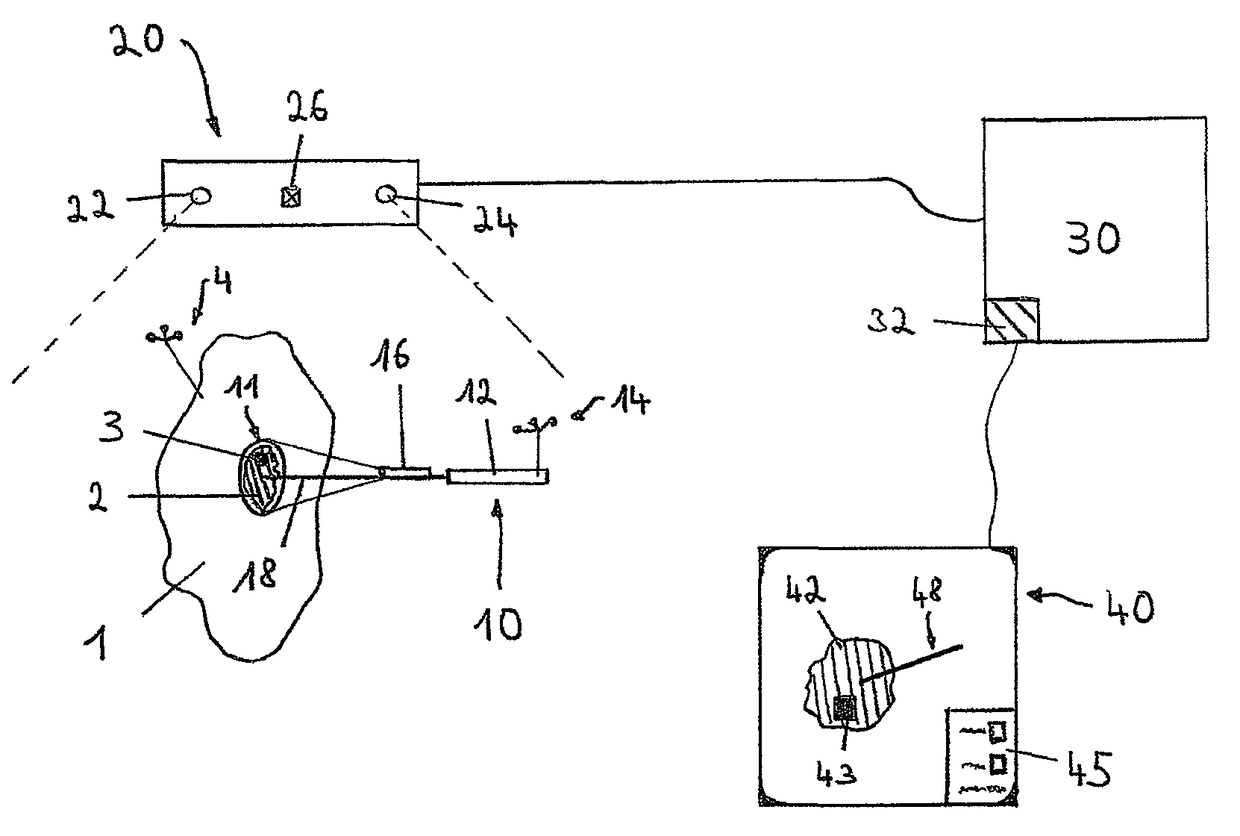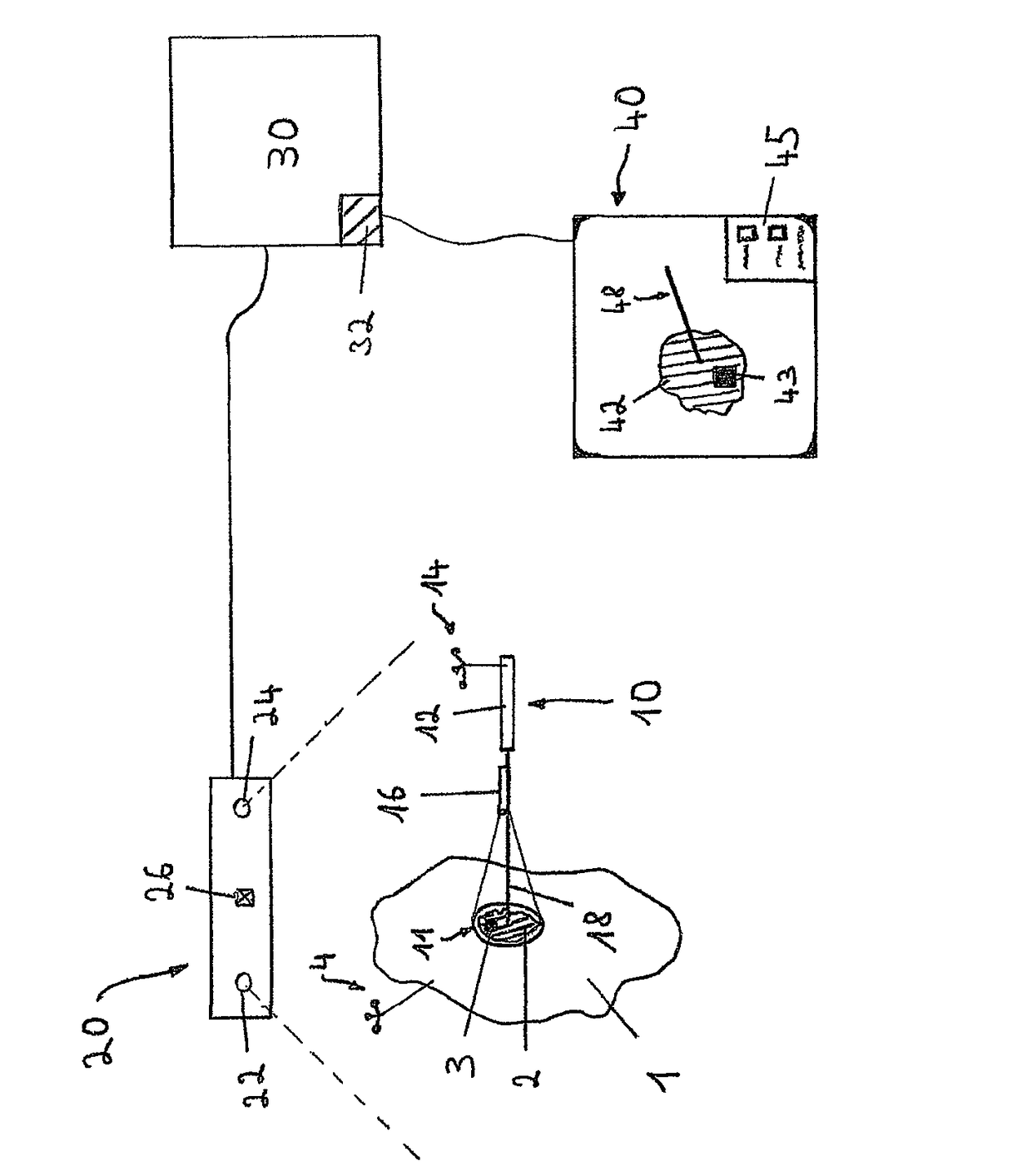Medical navigation image output comprising virtual primary images and actual secondary images
a technology of image output and medical navigation, applied in the field of medical navigation image output, can solve the problems of affecting the freedom of movement of treatment instruments and invasive methods, and achieve the effects of improving the ergonomics of navigation methods, improving the image output of medical navigation, and optimal us
- Summary
- Abstract
- Description
- Claims
- Application Information
AI Technical Summary
Benefits of technology
Problems solved by technology
Method used
Image
Examples
Embodiment Construction
[0019]In the FIGURE, the reference sign 1 indicates—in a highly schematized form—a part of a patient's body which comprises a region of interest 2 in which a navigation-assisted treatment is to be performed. Tissue situated in the region of interest 2 has been examined beforehand using medical imaging, and a virtual data set of said tissue has been produced (for example using a magnetic resonance and / or magnetic resonance method). This tissue is indicated by hatching. An object which can be visually captured particularly easily is also imaged in the region of interest 2 and bears the reference sign 3.
[0020]A reference array 4 is situated on the part of the patient's body. This reference array 4 and a reference array on the surgical instrument 10 (likewise shown) are situated in the visual range of a tracking system 20 which positionally detects and tracks these reference arrays 4 and 14 using two cameras 22 and 24, such that where the instrument 10 and the part of the body 1 are sit...
PUM
 Login to View More
Login to View More Abstract
Description
Claims
Application Information
 Login to View More
Login to View More - R&D
- Intellectual Property
- Life Sciences
- Materials
- Tech Scout
- Unparalleled Data Quality
- Higher Quality Content
- 60% Fewer Hallucinations
Browse by: Latest US Patents, China's latest patents, Technical Efficacy Thesaurus, Application Domain, Technology Topic, Popular Technical Reports.
© 2025 PatSnap. All rights reserved.Legal|Privacy policy|Modern Slavery Act Transparency Statement|Sitemap|About US| Contact US: help@patsnap.com


